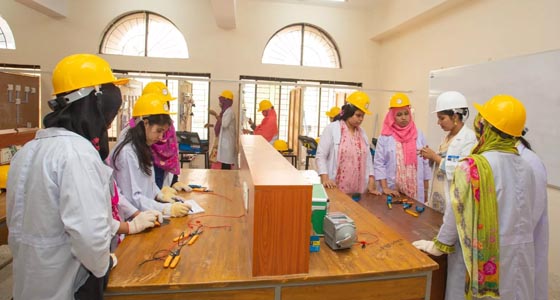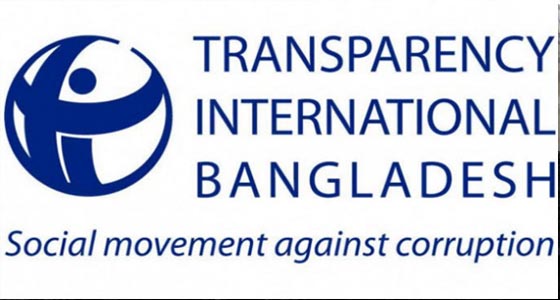Bangladesh, other countries in South Asia recorded lowest youth unemployment rates in 15 years: Report
- Last Update : 10:02:48 am, Monday, 12 August 2024
- / 688 Read Count
Diplomatic Correspondent
Bangladesh and other countries in South Asia recorded the lowest youth unemployment rates in 15 years in 2023, but the unemployment rate of 15.1 per cent is historically the region’s highest, according to a new International Labour Organization (ILO) report.
This is characterized by high rates of youth not in employment, education, and training (NEET), due to lack of equal opportunities or access to training and jobs and because of exclusion of young women from schooling and employment opportunities.
The NEET rate among young women in the subregion was nearly four times greater than the rate of young men, at 42.4 per cent and 11.5 per cent, respectively, in 2023.
At 31 percentage points, this marks the largest gender gap in youth NEET rates across the world.
This global report comes at a critical time when Bangladesh is undergoing a major political transition.
“Bangladesh is a nation defined by its youth,” said Tuomo Poutiainen, ILO Country Director for Bangladesh. “We believe the report’s findings and recommendations will be helpful in shaping an environment for a better future for youths in Bangladesh, aligning with the ‘Zero Unemployment’priority of the interim government,” he said.
With approximately two million young people entering the labour force annually and more than a quarter of the population (25.81 per cent) within the 15-29 age group, Bangladesh holds immense potential to harness the benefits of a demographic dividend.
Notably, 36.7 per cent of the total labour force falls within this age bracket, underscoring the country’s capacity for future growth.
“The ILO stands ready to provide technical support to Bangladesh in pursuing practical actions to make inclusive, full, and productive employment a reality,” Poutiainen added.
The global labour market outlook for young people has improved in the last four years, and the upward trend is expected to continue for two more, according the report.
However, the report, titled Global Employment Trends for Youth 2024 (GET for Youth), cautions that the number of 15- to 24-year-olds who are not in employment, education or training (NEET) is concerning, and that the post-COVID 19 pandemic employment recovery has not been universal.
Young people in certain regions and many young women are not seeing the benefits of the economic recovery.
The 2023 youth unemployment rate globally, at 13 per cent, equivalent to 64.9 million people, represents a 15-year low and a fall from the pre-pandemic rate of 13.8 per cent in 2019.
It is expected to fall further to 12.8 per cent this year and next. The picture, however, is not the same across regions. In the Arab States, East Asia and South-East Asia and the Pacific, youth unemployment rates were higher in 2023 than in 2019.
The GET for Youth also cautions that young people face other “headwinds” in finding success in the world of work.
It notes that too many young people across the globe are NEET and opportunities to access decent jobs remain limited in emerging and developing economies.
One in five young people, or 20.4 per cent, globally were NEET in 2023. Two in three of these NEETs were female.
For the youth who do work, the report notes the lack of progress in gaining decent jobs. Globally, more than half of young workers are in informal employment. Only in high- and upper-middleincome economies are the majority of young workers today in a regular, secure job. And three in four young workers in low-income countries will get only a self-employed or temporary paid job.
The report cautions that the continuing high NEET rates and insufficient growth of decent jobs are causing growing anxiety among today’s youth, who are also the most educated youth cohort ever.
“None of us can look forward to a stable future when millions of young people around the world do not have decent work and as a result, are feeling insecure and unable to build a better life for themselves and their families. Peaceful societies rely on three core ingredients: stability, inclusion, and social justice; and decent work for the youth is at the heart of all three,” explained Gilbert F. Houngbo, ILO Director-General.
Moreover, the report finds that young men have benefited more from the labour market recovery than young women.
The youth unemployment rates of young women and young men in 2023 were nearly equal (at 12.9 per cent for young women and 13 per cent for young men), unlike the prepandemic years when the rate for young men was higher. And the global youth NEET rate of young women doubled that of young men (at 28.1 per cent and 13.1 per cent, respectively) in 2023.
“The report reminds us that opportunities for young people are highly unequal; with many young women, young people with limited financial means or from any minority background still struggling. Without equal opportunities to education and decent jobs, millions of young people are missing out on their chances for a better future,” added Houngbo.
The ILO report calls for greater attention on strengthening the foundations of decent work as a pathway to countering young people’s anxieties about the world of work and reinforcing their hope for a brighter future.
This 12th edition of the GET for Youth marks the report’s 20-year anniversary. It looks back at what has been achieved in this century to improve young people’s working prospects and considers the future for youth employment “in an era characterized by crises and uncertainties”.
Looking at longer-term trends, the report concludes that:
• Growth in “modern” services and in manufacturing jobs for youth has been limited, although modernization can be brought to traditional sectors through digitalization and AI.
• There are not enough high-skill jobs for the supply of educated youth, especially in middleincome countries.
• Keeping skills development on pace with evolving demands for green and digital skills will be critical to reducing education mismatches.
• The growing number of conflicts threatens young people’s future livelihoods and can push them into migration or towards extremism.
• Demographic trends, notably the African ‘youthquake’ means creating enough decent jobs, will be critical for social justice and the global economy.
The report calls for increased and more effective investment, including in boosting job creation with a specific target on jobs for young women, strengthening the institutions that support young people through their labour market transitions including young NEETs, integrating employment and social protection for youth, and tackling global inequalities through improved international cooperation, public-private partnerships and financing for development.














